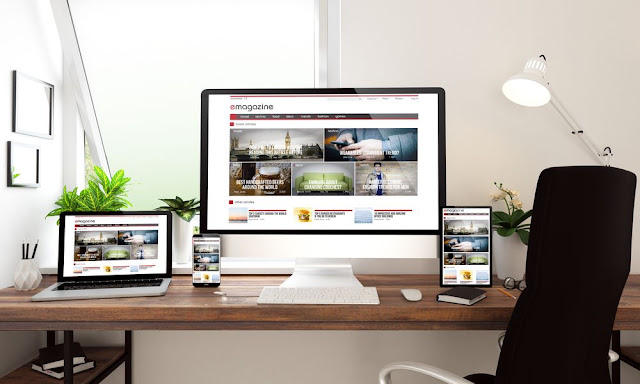How to Make a Responsive Website
Responsive Web Design Tips
Responsive web design is an advanced technique that implies that layout and design should respond to the visitor s environment and behavior according to his or her orientation and screen size. It is used in various applications where the layout and appearance of a page are highly dependent on the viewing distance and screen size of a particular device. It is also applicable in mobile devices such as tablets. This kind of website design is helpful for websites designed for specific purposes. This can make the site more attractive for the target group.
The term "responsive web design" implies that the layout and design of a website should be compatible across different devices, enabling users to view it on all devices with retina displays, high-definition screens, and HDTV. Responsive web design uses multiple-screen devices to display content across different display resolutions. Therefore, if you want to attract attention to your website on multiple devices, a multi-screen approach would be more appropriate. In the case of business websites, it may even be beneficial to go in for such a solution. While designing a site for a business enterprise, would help improve the usability of the website.
The prime element in creating responsive website designs is the viewport. This is a container used to align the content on a web page. It can take different forms, such as a viewport within a frame, a viewport within the bounds of a frame, or just a plain border around the viewport. There are many advantages associated with the use of this container, the foremost being the space which it occupies on the screen. It is possible to create a layout and get it running just by adding a few JavaScript lines, so the container can be used to create a dynamic layout. To make it more interesting, there is a usage of viewport meta tag which will make a layout consistent.
The second aspect that is significant when it comes to responsive web design is how it utilizes images and animations. The animation is an excellent way to present information in a manner that is more engaging. The main problem with using animations on a website is that they slow down the loading process of the entire website. There is no point in presenting information through animation when all you want is for the visitor to read it. Therefore, it is necessary that you use image compression and image map compression with your Responsive Website Design.
The third most important factor in creating a responsive website redesign is to create a user-friendly interface. A website that is not user-friendly is one that does not instill confidence in the visitor. If the visitor leaves your website without even trying to understand what the site is about, then how can expect them to return? On the contrary, if visitors find your website user-friendly, then they are more likely to keep coming back to it.
Another important factor in creating a website redesign is to make it flexible in terms of different devices. Even if computers have become universal in terms of their capabilities, there are always going to be some devices that are more powerful than others. To ensure that your website is versatile, it is advisable that you host it on servers that are accessible by a wide range of computers. This will ensure that users do not have to switch machines when they want to access your site. Also, Ethan Marcotte recommends using multiple versions of the site on different devices so that each version gains the advantage of having the latest upgrades.
In addition to being flexible in terms of operating systems, users also need to be able to view your site on a variety of browsers. Web designers use media queries to specify the way in which different devices can display the site. It is advisable that you use media queries in your web design as well, especially in cases where you are targeting the responsive website design approach. With media queries, you can specify which devices will be able to view your website across a variety of browsers.
If you do not have a responsive Website Design, then you are more likely to face cross-browser and device compatibility issues when people use your site. When you create a site for your mobile-first target audience, you must take into consideration how your pages will change as the size of the screen changes. In order to make sure that your pages do not break on different resolutions or screen sizes across a variety of devices, you should include mobile-first in your overall design. Using a mobile-first approach will allow your site to scale up well and adapt well when it comes to different devices and screen sizes, and this is important because many businesses fail to realize the importance of mobile-first when it comes to designing a website.






Comments
Post a Comment